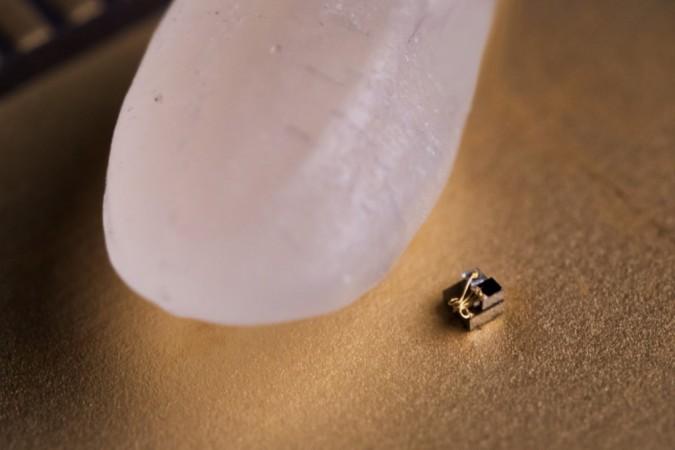The world of technology is insanely fascinating and lets us witness some of the finest innovations of our generation. After IBM showed us the "world's smallest computer" back in March, the world was startled by the how greatly we've advanced in the field of tiny computing.
But the talent at the University of Michigan just outdid IBM, by creating a computer smaller than the "world's smallest computer." Don't be fooled by the size of Michigan Micro Note, as it could help cure cancer and be used in a variety of other researches.
Incredibly small
IBM's minuscule computer measures 1mm x 1mm, and if you think what could be smaller than that, U-M's micro-computing device measures just 0.3mm x 0.3mm. To put that in perspective, the Michigan Micro Note could easily be dwarfed by a grain of rice as shown in the photo below. Now, that's an unbelievable feat.

But the idea wasn't just to go smaller, but also integrate some meaningful, life-changing use cases in it. And guess what, U-M engineers might have just achieved it.
Helping cure cancer & beyond
"Since the temperature sensor is small and biocompatible, we can implant it into a mouse and cancer cells grow around it. We are using this temperature sensor to investigate variations in temperature within a tumour versus normal tissue and if we can use changes in temperature to determine success or failure of therapy," Gary Luker, a professor of radiology and biomedical engineering who collaborated on the research, said in a statement.
Besides the Micro Mote's use in oncology, the miniature computing device could be used in a variety of researches, including pressure sensing inside the eye for glaucoma diagnosis, oil reservoir monitoring, biochemical process monitoring, audio and video surveillance and tiny snail studies.
But let's not put a limit on the Micro Mote's potential just yet.
"When we first made our millimetre system, we actually didn't know exactly all the things it would be useful for. But once we published it, we started receiving dozens and dozens and dozens of inquiries," David Blaauw, lead professor of the development of the Micro Mote, said in a statement.
Uphill struggle
The University of Michigan previously held the title of the "world's smallest computer" that measured 2mm across. That was 2015, and three years later IBM managed to sideline the University of Michigan, even if was for less than three months.
While developing the Michigan Micro Mote, U-M researchers were met with stringent challenges such as making a computer that's 1/10th the size of IBM's and be able to run very low power on a transparent system packaging.
The new computer packs RAM, photovoltaics, processors, wireless transmitters and receivers. Instead of the conventional radio antennae, the system uses visible light to receive and transmit data and the base station provides light for power and programming. But unlike traditional computers, Micro Mote loses all prior programming and data as soon as they lose power, a common trait in micro-computing devices, including IBM's.
"We are not sure if they should be called computers or not. It's more of a matter of opinion whether they have the minimum functionality required," Blaauw said.

















